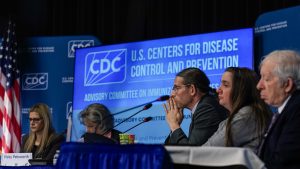Trump admin proposes significant change to Endangered Species Act
Ella Greene April 17, 2025 0
- The Trump administration has proposed a significant change to the Endangered Species Act by redefining the word “harm” within the law. This change in meaning would limit the word’s scope to actions that directly injure or kill protected animals, excluding habitat destruction from the definition.
- The federal government claims this revision reflects the “single, best meaning” of the law instead of “an agency’s own preferred interpretation.”
- Environmental groups warn that the change could lead to increased habitat loss for endangered species, and expects legal challenges will follow if the proposal moves forward.
Full Story
The Trump administration has proposed a significant change to the Endangered Species Act (ESA). The change would come by redefining just a single word within the law, “harm.”
How will redefining one word change the ESA?
Under the current interpretation, the ESA makes it illegal to “take” protected animals, which includes any actions that “harass, kill, or harm” them. Historically, the term “harm” has included habitat destruction, which can affect a species’ ability to survive and reproduce.
This proposed revision comes from the U.S. Fish and Wildlife Service and the National Marine Fisheries Service. It would narrow that definition, limiting it to actions that directly injure or kill protected animals. Habitat degradation would no longer fall under the definition of harm.
Why is the Trump administration trying to change the ESA?
According to the federal government, the change is intended to reflect what it describes as the “single, best meaning” of the law, instead of “an agency’s own preferred interpretation.”
The administration also cited the dissenting opinion of the late Supreme Court Justice Antonin Scalia in a 1990s case that challenged the ESA’s broader definition of harm, in which he argued that the legislation should not cover actions that indirectly harm animal populations.
“The current definition (of ‘harm’), which includes habitat modification as a form of ‘take,’ runs counter to the best reading of ‘take’ under the ESA,” the administration said in its announcement of the proposal. “This proposed rule aims to align the definition with the plain text of the ESA, as informed by historical and legal interpretations of ‘take’ as an affirmative act directly affecting wildlife.”
How are environmentalists responding to this proposal?
Some conservation experts have expressed concern over this potential change to the ESA. Organizations such as the Center for Biological Diversity warned that the change could increase habitat loss, which they claim is the “biggest single cause of extinction and endangered species.” They argue that the new interpretation could allow for more logging, mining, and development in critical habitats.
“It upends how we’ve been protecting endangered species for the last 40 years,” said Noah Greenwald, endangered species director at the Center for Biological Diversity.
What happens next?
The proposed change is now open to public comment which must be submitted by Monday, May 19. Legal challenges are anticipated if this ESA revision is ultimately implemented.
Related Stories
Ella Rae Greene, Editor In Chief
Ella Greene
Ella and the staff at Clear Media Project (CMP) curate these articles.
Unless otherwise noted CMP does not write these articles.
The views, thoughts, and opinions expressed in the articles published on this blog belong solely to the original authors and do not necessarily reflect the views of the blog owner. The blog owner does not claim ownership of the content shared by contributors and is not responsible for any inaccuracies, errors, or omissions.
All rights and credits goes to its rightful owners. No Copyright Infringement is intended. If you believe any content infringes on your rights, please contact us for review and potential removal.





